How is radish useful for the body and to whom is it contraindicated?
Radish - a vegetable revered by man since time immemorial, is attractive for its unique composition and wide application. After reading the article, you will find out which properties of the radish are especially useful for the human body and how to apply these properties.
Content:
- Description and types of radish
- Composition and useful properties
- The use of radish in cosmetology and medicine
- Harm and contraindications
- How to choose and store a vegetable?
Description and types of radish
Radish is an annual, biennial plant belonging to the cabbage family. The probable "progenitor" of the modern sowing radish is the wild radish, which still grows on the Mediterranean coast.
Currently, many varieties of this vegetable have been bred, which differ in shape, color, ripening period, growing conditions and even taste.
Radish types:
- Black radish - This is a root vegetable with a black skin and a rounded white flesh. The fruits grow to a large size and weigh up to 2 kilograms. Black radish has a sharp, bitter taste, similar to that of horseradish. It is because of this taste that this type of radish is the most useful, as it contains glycosides and phytoncides that help to strengthen the immune system.
- White radish... It is a white root vegetable of various shapes: elongated (elephant's tusk), conical or round (Maiskaya, Zimnyaya Belaya). The pungency in the white radish is less than in the black one, but the flesh is softer and juicier. Daikon (Japanese radish) also belongs to the species in question. The taste of daikon is not so bitter as that of black, its weight reaches 16-17 kilograms, however, the shelf life of such a radish is from 2 to 6 months, depending on the temperature regime.
- Green (Chinese) radish. This kind of radish has become widespread in the countries of the East. The roots of Chinese radish, like white, are large and juicy, and the color is from light green to dark green with pink flesh. This type of radish is even less stored than black and white, but it contains a lot of mineral salts and fiber. Therefore, it is eaten most often in the summer.
- Wild radish. It grows everywhere, is a weed, it is suitable for eating only in dried form, in a flowering form it is poisonous.
Composition and useful properties
It is unlikely that our ancestors knew the composition of the radish grown in their garden, but they knew firsthand that it really helped in the treatment of many diseases. So, the composition of the radish includes:
- vitamins: B1, B2, B3, B5, B6, B9, C
- minerals: zinc, selenium, iron, phosphorus, potassium, calcium, phosphorus
- unsaturated and saturated fatty acids
- various amino acids
- enzymes
- essential oils
Judging by its composition, the radish is a storehouse of vitamins and minerals. Radish is a necessary product in the house both in winter, during the cold season, as it has bactericidal properties, and in the spring, during vitamin deficiencies, as it contains a huge amount of minerals and vitamins. Radish increases appetite and improves bowel function, thus eliminating constipation, helps with kidney and biliary tract diseases.
Another property of radish is its ability to improve blood composition, lower blood cholesterol, and reduce the risk of atherosclerosis.
Radish is used to treat cardiac arrhythmias.And since the radish is 90% water, it contains a lot of fiber, plus the radish is a low-calorie product, this vegetable helps to fight excess weight. In addition to the fact that the radish is eaten, this product is used for cosmetic purposes, as well as for the treatment of certain diseases.
The use of radish in cosmetology and medicine
For cosmetic purposes, black radish began to be used in Ancient Russia:
- Radish juice is great for whitening the skin of the face, removing age spots and freckles.
- Hair masks are made from radish to prevent hair loss and eliminate dandruff.
- A face mask made from radish will eliminate the signs of skin aging and premature aging.
- Black radish juice mixed with egg yolk makes the skin less oily.
Radish is an extraordinary vegetable with many medicinal qualities:
- Since radish contains a lot of fiber and improves bowel function, it is used to treat diseases of the stomach and intestines, such as gastritis, enterocolitis and constipation.
- Radish with honey is an excellent remedy for cough, therefore radish juice mixed with honey is used in the treatment of bronchitis, asthma and upper respiratory tract catarrh.
- Due to the property of the radish to thin the blood and lower the level of cholesterol in the blood, it is popularly used in the treatment of cardiovascular diseases.
- Radish relieves pain - therefore, a compress made from gruel of grated radish is simply necessary during periods of exacerbation, for people suffering from joint diseases - arthritis and arthrosis.
- Radish is an irreplaceable assistant in the treatment of genitourinary disorders, skin diseases, and insect bites. Its use for cancer prevention is due to its ability to remove toxins from the human body.
Harm and contraindications
However, in addition to the fact that radish is a unique vegetable that has no analogues, one should also remember about the harm that can be done to the body if it is used incorrectly. Firstly, radish should be used only for prevention purposes and to alleviate the course of chronic diseases. In acute diseases, inflammation of organs and tissues, radish cannot be used.
Secondly, radish cannot be used for food for the following diseases and conditions:
- Diseases of the digestive system, such as gastric and duodenal ulcers, hyperacid gastritis.
- Diseases of the biliary tract.
- Severe heart and kidney diseases.
- Gout.
- Individual intolerance.
- Allergy.
- Pregnancy.
Thirdly, when using radish as a medicine, you should also pay special attention to your own feelings, and it is best to consult your doctor.
How to choose and store a vegetable?
In order for the radish to preserve all the nutrients it contains, it must be properly stored. Autumn and winter varieties are more suitable for storage. And in order for the radish to be stored longer, it must be carefully sorted out - it is better to preserve root crops without holes, without cracks and spots. The tops are cut 1-2 cm from the root crop, and the radish itself must be clean. Only after such simple manipulations can it be sent for the winter.
You can store a vegetable in the basement, cellar and even on the loggia.
If the harvest of the radish turned out to be good, then it will be better to store it in the basement or in the cellar. So that the radish does not fade until spring, it is necessary to comply with the conditions in the storage place: ventilate the room, keep the humidity about 80%, and the air temperature + 1, + 2 degrees.
Radish is usually stored in wooden boxes with holes drilled for ventilation. The boxes can be filled with slightly damp sand. After the vegetables have been sorted, they are placed in boxes. During the storage period, it is necessary to conduct an audit at least once a month - for the formation of rotten vegetables, which are removed from the box.
If the harvested crop is not so rich, then it is stored on a glazed loggia or balcony. To do this, the radish is folded into a bag and carefully covered with a blanket.This type of storage has its drawbacks - when the air temperature is below 0 degrees, there is a risk that the harvest will freeze, so at such moments they bring bags into the apartment. The radish is also stored in the refrigerator, pre-folded in a container with holes for ventilation, but the shelf life is no more than a month.
More information can be found in the video:



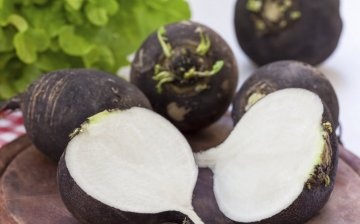
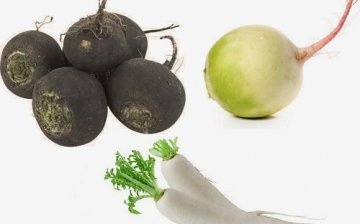
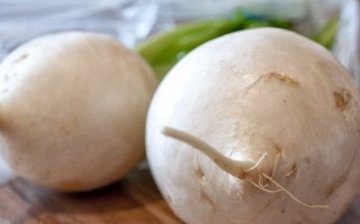


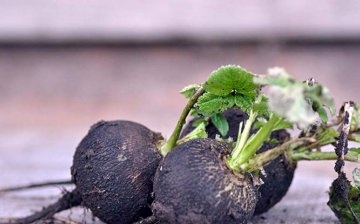






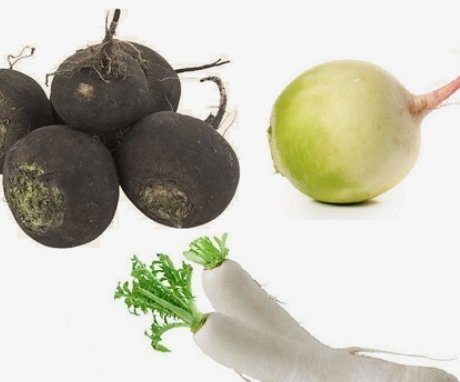
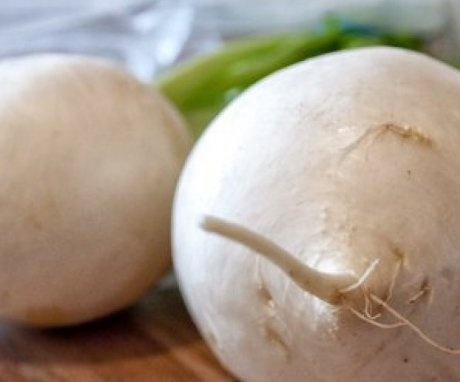
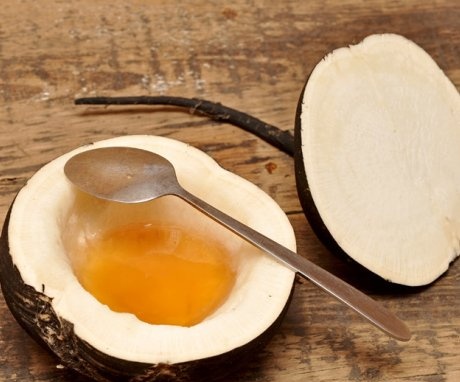

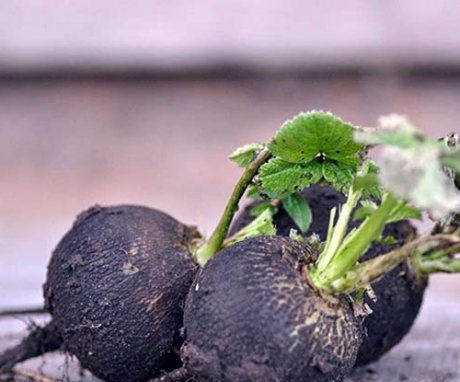
A very useful vegetable, I did not know about many of its properties. I only know that radish with honey really helps with coughs, in our family they often suffer from this, many times they were saved by radishes.
We have been growing Japanese Daikon radish for several years, we had two varieties, one is an oblong white, similar to a large carrot, and the other is round with a pink center. Daikon is convenient to grow, because it is planted at the end of June, if something has not sprung up in the garden, then you can take this place with Daikon. Maybe this radish is not as healthy as the black one, but it has almost no bitterness and is quite tasty in salads.